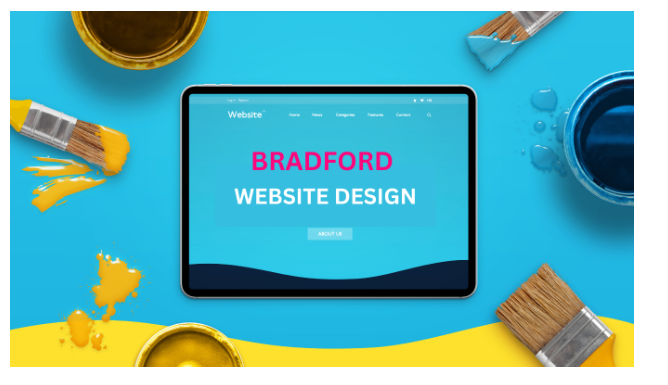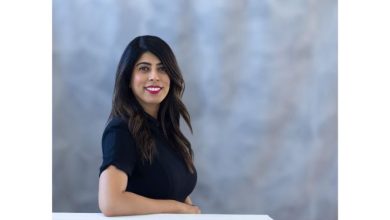Bradford Website Design: Creating Impactful Online Experiences

Hello there! We know you’re looking for the best web design services in Bradford to boost your business’s online presence. You’re in the right place because we’ll guide you through the key elements of finding the perfect web design partner. In this article, we’ll explain how local designers tailor their work to match Bradford’s unique culture and how they balance user experience, functionality, and style. By the end, you’ll know exactly what to look for. Keep reading to discover the best web design solutions for your business!
Key Takeaways
- Bradford’s web design scene offers diverse services suited to local businesses.
- Effective web design combines user experience with aesthetic appeal.
- Choosing the right designer can enhance a business’s online presence.
Understanding Bradford’s Web Design Landscape
Bradford website design scene has unique features shaped by local businesses and technological advancements. The focus here is on the current market dynamics and evolving design trends that influence local website development.
Market Analysis
The web design market in Bradford has been growing steadily, fueled by an increase in digital presence needs for local businesses. Companies like Roedesign play a crucial role in this growth, offering a mix of design and strategic services tailored for various sectors.
Small and medium-sized enterprises (SMEs) make up a significant portion of potential clients, seeking to enhance their online visibility. The local competition among design agencies encourages innovation and competitive pricing.
Individuals and organizations are increasingly investing in user-friendly, visually appealing websites. They understand that a well-designed site can lead to higher customer engagement and increased sales.
Trends in Web Design
Current trends in Bradford’s web design reflect both global influences and local preferences. Responsive design remains essential as more users access websites from mobile devices.
Key Features:
- Minimalism: Clean, simple designs that aid navigation.
- Interactivity: Engaging elements like animations and chat features to improve user experience.
- Sustainability: A growing focus on environmentally friendly hosting solutions.
Web design agencies are also incorporating SEO best practices right from the design phase. This integration helps improve a website’s ranking and visibility.
Local designers often emphasize culturally relevant imagery and messaging, creating a strong connection with Bradford’s diverse community. Staying updated on these trends ensures that businesses remain competitive in the digital landscape.
Key Elements of Effective Web Design
Effective web design focuses on creating a seamless experience that combines user needs with aesthetic appeal. Key elements include user experience (UX) principles, visual aesthetics, and responsive design. Each of these components plays a crucial role in how a website functions and how users perceive it.
User Experience (UX) Principles
User experience is about making the website easy and enjoyable for visitors. Key aspects include intuitive navigation, clear calls to action, and fast-loading pages.
- Intuitive Navigation: Visitors should easily find what they need. A well-structured menu and a search function enhance accessibility.
- Clear Calls to Action: Buttons and links should stand out and guide users toward desired actions, such as signing up or making a purchase.
- Fast Loading Times: Delays can frustrate users. Optimizing images and scripts ensures a smooth experience.
A company like Roedesign understands that UX principles are essential for engaging users and reducing bounce rates.
Visual Aesthetics
Visual appeal matters in web design. It captures attention and conveys the brand’s identity. Key elements include color schemes, typography, and imagery.
- Color Schemes: Colors should reflect the brand and evoke the right emotions. A consistent palette helps with brand recognition.
- Typography: Choosing readable fonts and maintaining hierarchy with headers and body text improves readability. It’s vital that users can easily scan the content.
- Imagery: High-quality images and graphics enhance the site’s visual impact. They should complement the text and reinforce the message.
Visual aesthetics work together to create a memorable first impression and encourage users to explore further.
Responsive Design
Responsive design ensures that a website functions well on various devices, such as smartphones, tablets, and desktops.
- Fluid Grids: Layouts should adjust according to screen size. This adaptability keeps content organized and accessible.
- Flexible Images: Images must scale correctly on different devices. They should load properly without losing quality.
- Media Queries: Using CSS media queries allows specific styles for different screen resolutions, ensuring an optimal viewing experience.
Responsive design is not just an option; it is now a necessity. It enhances user satisfaction and boosts search engine rankings, making it a priority for effective web design.
The Design Process
The design process is key to creating effective websites. It involves several important stages that ensure the final product meets both client needs and user expectations. Each phase plays a vital role in achieving a successful outcome.
Strategy and Goal Setting
In the initial stage, designers focus on understanding the client’s goals and the target audience. This phase often includes meetings to gather detailed information about the business, its objectives, and customer needs. It’s essential to define clear, measurable goals to guide the entire project.
Key Questions:
- What is the main purpose of the website?
- Who is the target audience?
- What features are necessary for success?
This groundwork allows designers, like those at Roedesign, to formulate a strategy that aligns with the client’s vision, ensuring that each subsequent step addresses the defined goals.
Design and Development
The design and development phase is where ideas come to life. Designers create wireframes and prototypes to visualize the website’s layout and user journey. These early drafts help clients see the potential structure and flow of their site.
During this phase, developers start coding. They ensure that the website is responsive and functions well on various devices. Incorporating user experience (UX) and user interface (UI) best practices is crucial for making the site intuitive and engaging.
Considerations Include:
- Color schemes
- Typography
- Navigation structure
Collaboration between designers and developers at this stage often leads to innovative solutions that enhance usability and appeal.
Testing and Launch
Testing is a critical step before launching the website. This process involves checking for bugs, ensuring compatibility across different browsers, and verifying that all links and features function properly.
User testing is also important; real users can identify issues that the design team might have missed.
Once testing is complete and any necessary adjustments have been made, the site is ready for launch. A well-planned launch strategy is crucial to attract the target audience and ensure a smooth transition into the digital landscape.
Selecting the Right Web Design Partner
Choosing the right web design partner is crucial for the success of any website project. A focused approach in evaluating portfolios, understanding client feedback, and assessing pricing can make a significant difference in the outcome.
Evaluating Portfolios
When assessing potential web design partners, evaluating their portfolios is essential. A strong portfolio showcases the designer’s style, creativity, and technical skills. It allows clients to see if the designer’s work aligns with their vision.
Look for diversity in the projects presented. A varied portfolio indicates versatility and experience in handling different types of websites. For instance, if an agency like Roedesign has worked on e-commerce, blogs, and corporate sites, this may be a positive sign of their adaptability.
Pay attention to the design elements used, such as color schemes, layout, and user experience. An agency should demonstrate a clear understanding of modern design trends and best practices.
Client Testimonials and Reviews
Client testimonials and reviews provide valuable insights into the reliability and effectiveness of a web design partner. These can be found on the agency’s website, social media pages, or review platforms.
Positive feedback from past clients is a strong indicator of satisfaction. Look for comments about timely project completion, communication skills, and ongoing support.
Conversely, be wary of consistent negative feedback. It may reveal underlying issues with the agency’s work process or customer service. A partner like Roedesign should have a solid reputation, consistently demonstrating their ability to meet client needs.
Pricing and Value Proposition
Pricing can vary widely across web design agencies. When selecting a partner, it is important to understand both the costs involved and the value offered.
Request detailed quotes from potential partners. This will help compare what is included in each package. Some agencies may offer additional services such as ongoing support, SEO, or marketing at a higher price.
Value should not be based solely on the lowest bid. Instead, consider the quality of work, experience, and level of service provided. A more expensive agency may offer better support and superior results, making it a worthy investment.
Frequently Asked Questions
This section covers key aspects of website design that are essential for creating an effective and appealing site. Readers will gain insights into design elements, user experience, trends, and costs associated with professional services.
What are the key elements of a successful website design?
Successful website design includes several essential elements. These are a clear layout, easy navigation, visually appealing graphics, and fast loading times. Each component contributes to a user-friendly experience that keeps visitors engaged.
How does responsive design affect user experience on different devices?
Responsive design ensures that a website works well on various screen sizes and devices. This approach improves user experience by making content easily accessible on smartphones, tablets, and desktops. It reduces the need for zooming or scrolling, leading to higher user satisfaction.
What are the latest web design trends to consider for a new website?
Current web design trends include minimalistic layouts, bold colors, and dynamic animations. Incorporating these elements can make a website more engaging and visually appealing. Keeping up with trends helps businesses attract and retain customers.
How important is SEO in the overall design of a website?
SEO is crucial in website design because it affects how easily potential customers can find a site. Integrating SEO-friendly features, like keyword-rich content and optimized images, improves search engine rankings. A well-designed site enhances visibility and drives organic traffic.
What is the average cost for professional website design services?
The average cost for professional website design services varies widely. It depends on the complexity of the project and the expertise of the designer. Simple sites may start around a few hundred dollars, while more complex projects could reach thousands.
How can I evaluate the effectiveness of my website’s design?
Evaluating a website’s effectiveness involves analyzing user engagement and site performance. Tools like Google Analytics can provide data on visitor behavior, bounce rates, and conversion rates. Regular assessments help identify areas for improvement and ensure the site meets user needs.
Conclusion
In conclusion, having a professional website design is important for businesses in Bradford. A site that works well on all devices, is easy to use, and follows SEO rules helps attract more visitors and builds trust in the brand. For any business in Bradford, investing in good Bradford website design is a smart way to succeed in the long run.
Read More From Techbullion





